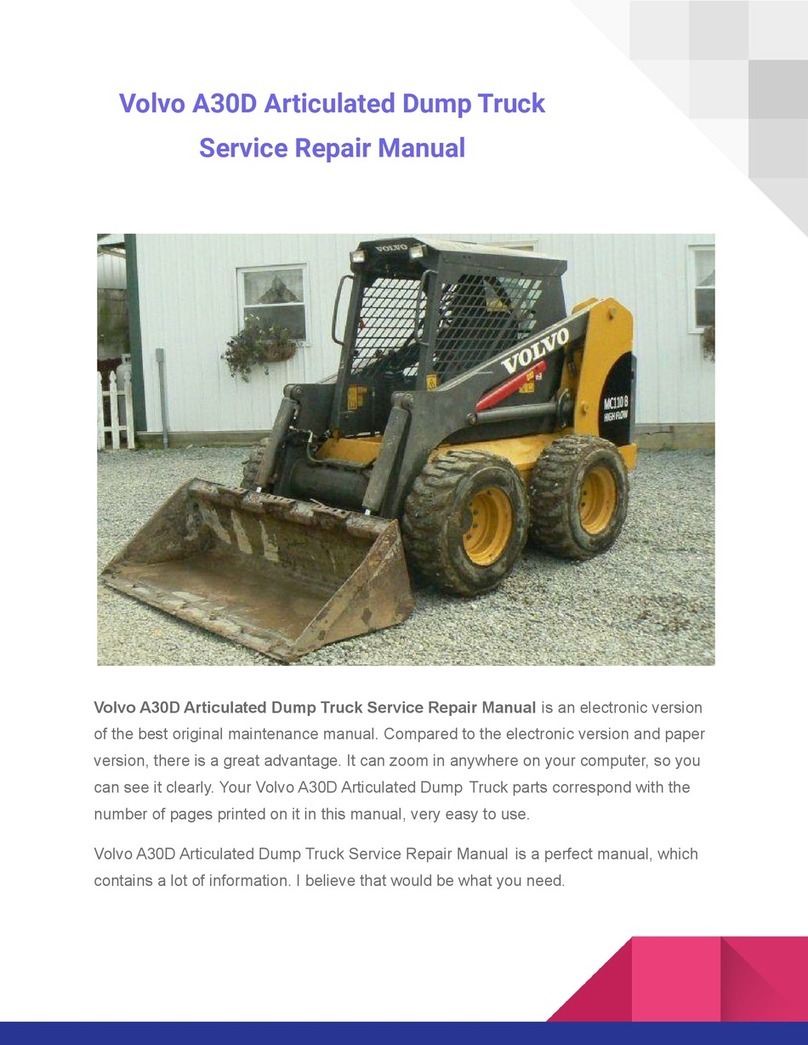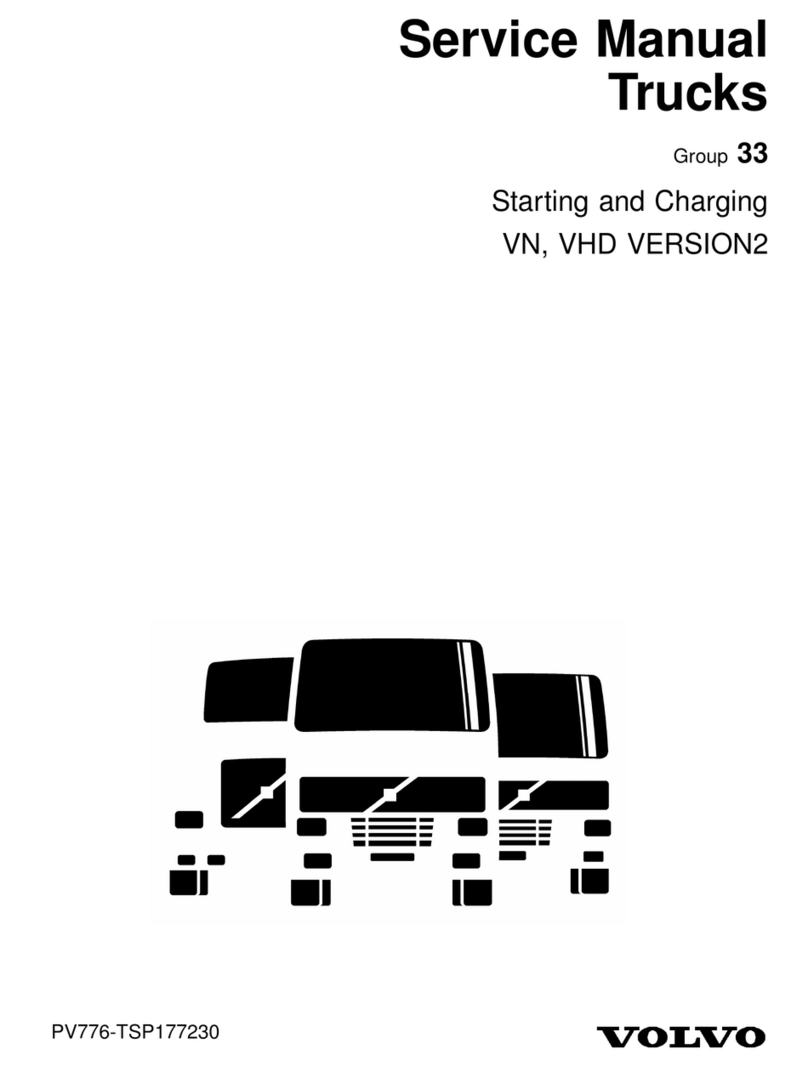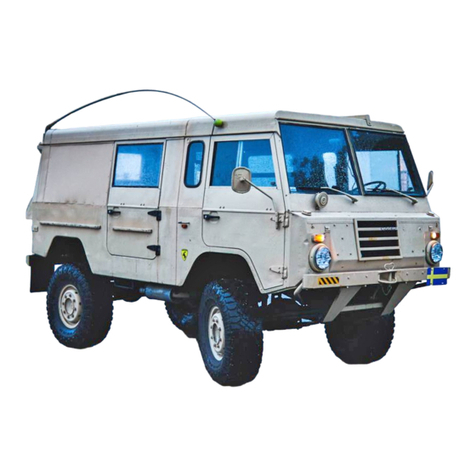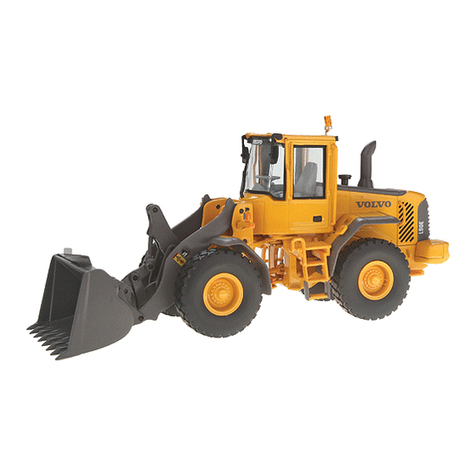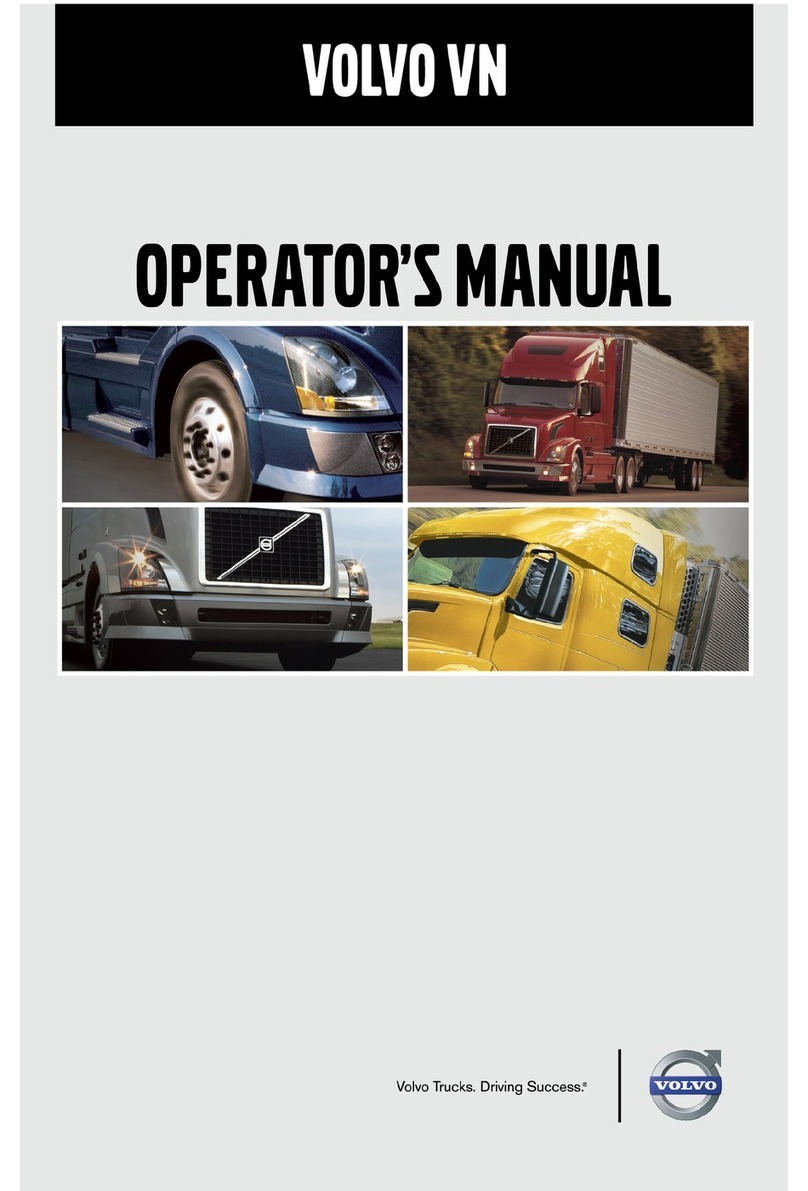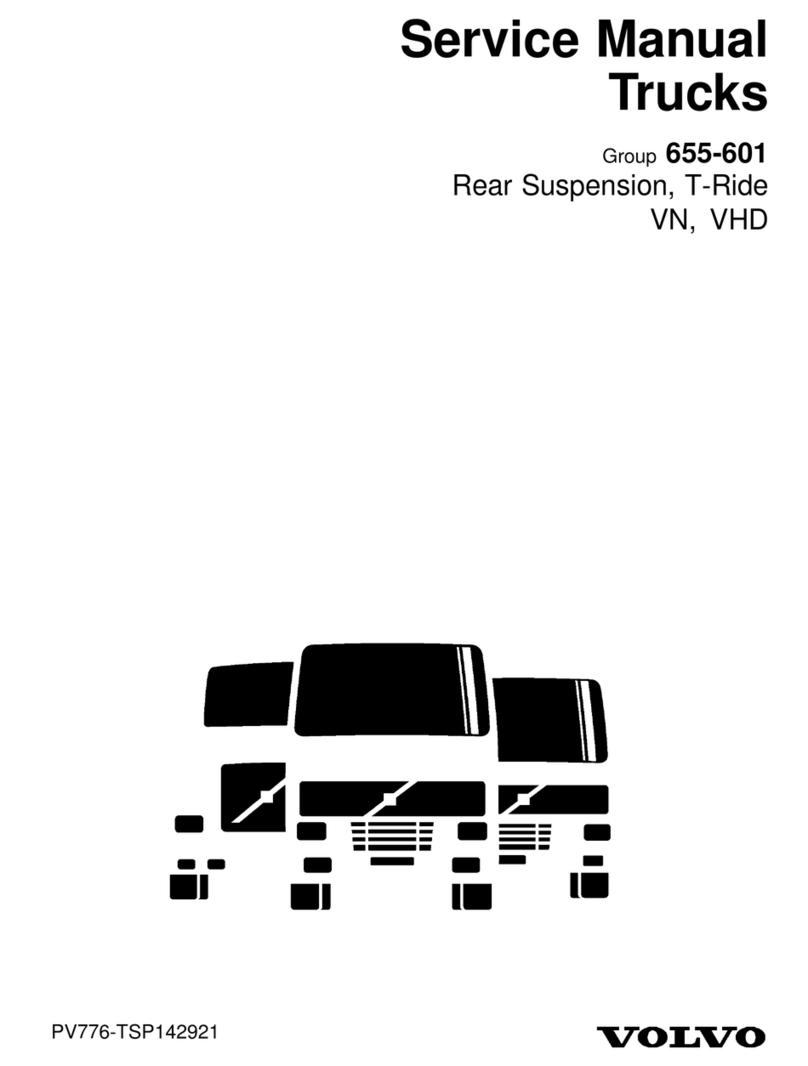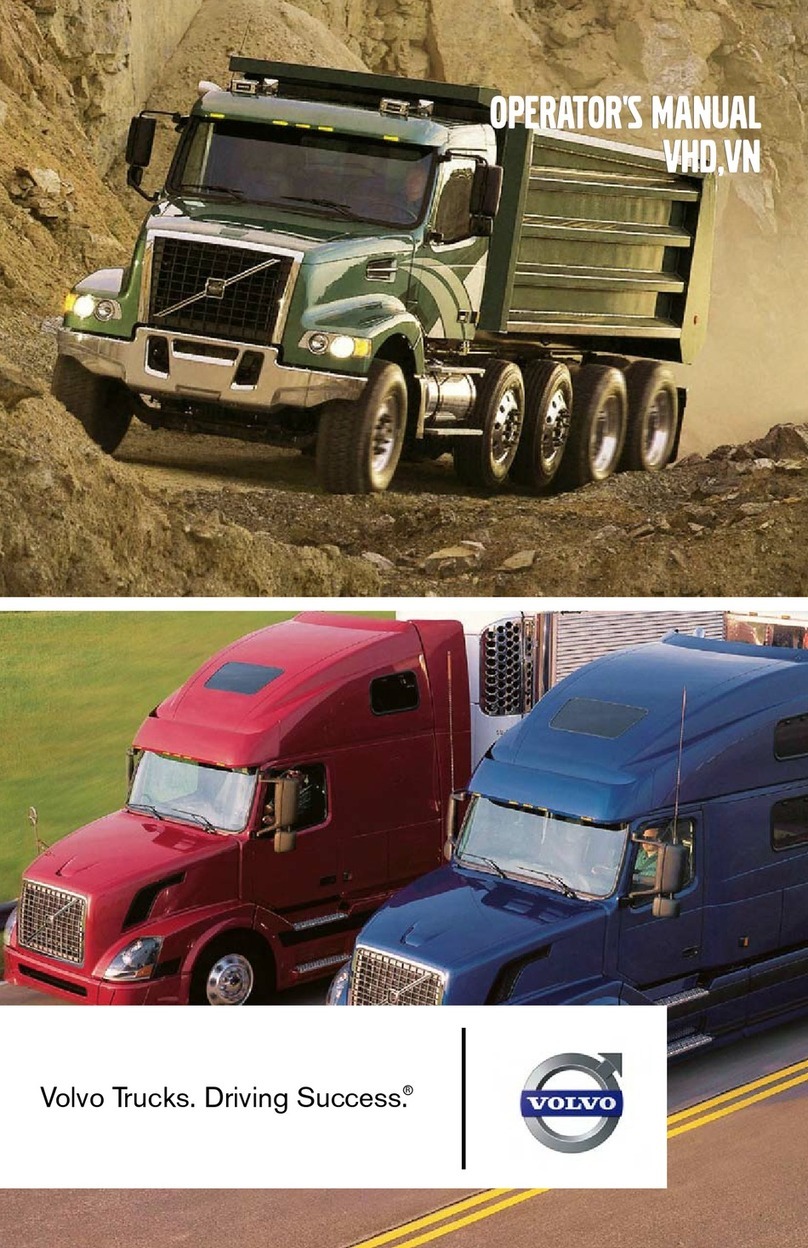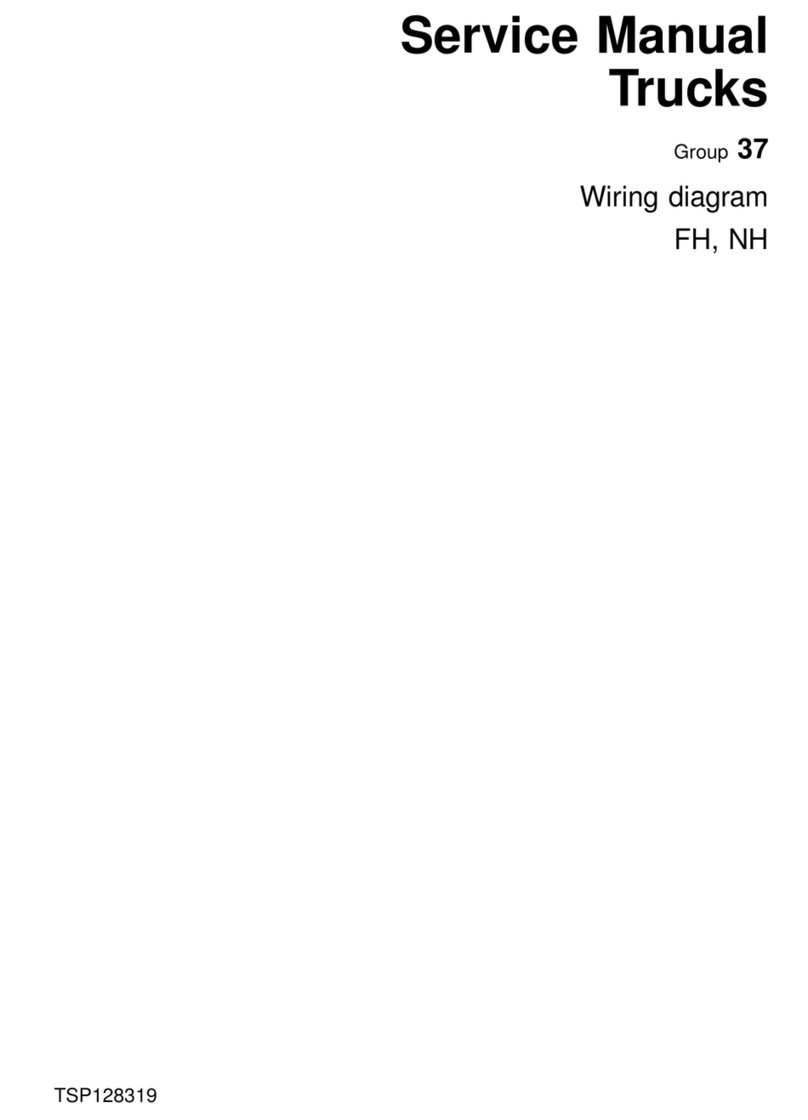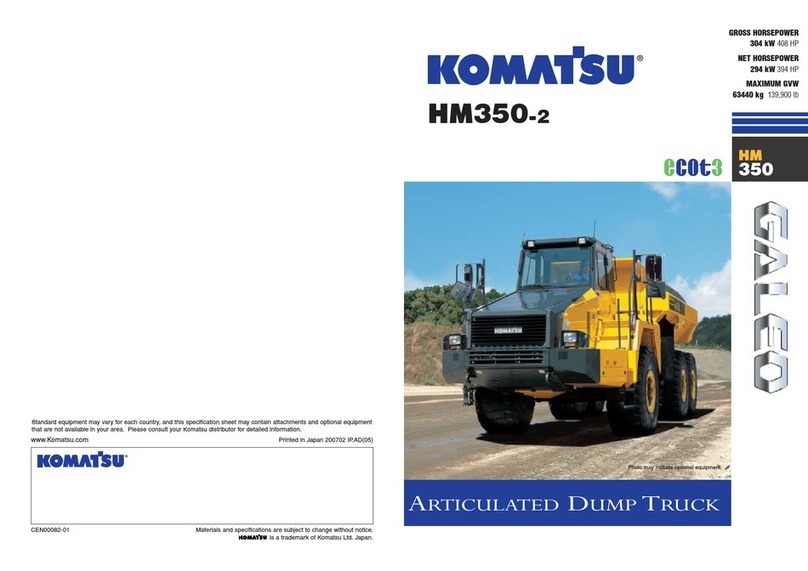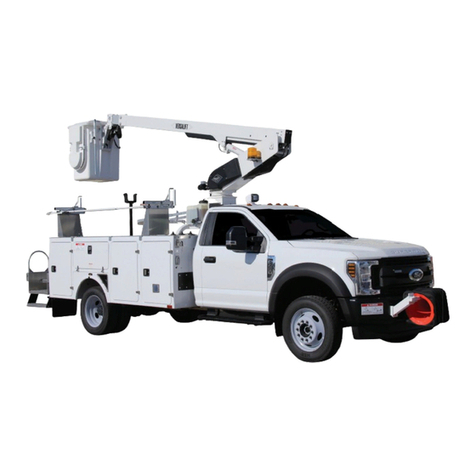
D
Group 177 General
Program Structure
This maintenance program has been based on the
progress in vehicle technology and increases in oil quality
to simplify the maintenance.
For simplified scheduling, the program has tied
maintenance to logical time or mileage limits that make it
easy to anticipate needed servicing. For the majority of
on-highway operators, the 24,000 km (15,000 miles) or 4
months for basic service and 96,000 km (60,000 miles)
or 12 months for annual service, schedule can be used
with little change.
For further information concerning maintenance
scheduling, see service information in Group 1, “Oil and
Filter Change Intervals for Volvo Components,” publication
number 175-60, “Approved Oils Lists, Volvo Components”.
Advantages
A well-planned preventive maintenance program offers
the following advantages:
The lowest attainable maintenance cost.
Maximum vehicle uptime.
Better fuel economy.
Reduced road failures; greater dependability.
Increased customer confidence, better public relations.
Less possibility of accidents due to defective
equipment.
Fewer driver complaints.
Regardless of the planning and the details of the
maintenance program, the success of the program
hinges on the caliber of workmanship in performing
the actual inspection. A major cause of failure is a
“pencil inspection;” that is, the mechanic checks off
each operation as being OK without making the actual
inspection. A “pencil inspection” defeats the purpose of
the inspection, which is to detect an impending failure.
Maintenance Form
A Service Manual is issued detailing the current inspection
forms. Forms are created for different users but all
with the same references to this document. When the
inspection point is carried out, check the box if the item
is OK. If further work, such as adjustment, repair, etc.,
needs to be performed, record this information and go
on with the next inspection point. Items noted as being
faulty or in need of adjustment need to be shown to the
customer and scheduled for repair.
There are many time — and/or mileage-based — service
items that are not listed on the form. Look at the end of
this document for a listing of additional components that
may need to be serviced, depending on the mileage or
time since last service.
Maintenance Records
It is important to use the inspection form together with
other reports to come up with the best maintenance
program for a specific application. Use driver’s reports,
complaints, parts usage, repetitive failures, previous
repair orders, road failures, etc. to build a maintenance
history.
Records should be collected over the lifetime of the
vehicle to form a permanent vehicle record file. The
vehicle file should be used to customize the operational
maintenance needs.
The “Driver Inspection Form” is also required by Federal
law. The use of this inspection report makes the driver
a part of the maintenance program and places direct
responsibility on the driver to report problems that may
come up during operation. When properly used, there
should be no excuse for a defective vehicle being in
service.
Basic Inspection
Note: The included Basic Service checklist is an
original copy. The document can be updated without
notice.
The Basic inspection is carried out at a maximum of
24,000 km (15,000 miles) or 4 months, whichever comes
first.
All inspection points are to be carried out as verification
of function or condition. Any defects are noted on the
inspection form for later correction, if so ordered by the
vehicle owner.
Note: The standard repair time for performing the
Basic Service Preventive Maintenance is based on
inspection and Oil and Filter Change, without repair
or adjustment.
Annual Inspection
The Annual inspection is carried out yearly in addition to
a Basic inspection. This inspection is designed to open
up components for inspection or using test equipment to
record performance.
The ideal time to carry out the Annual inspection is right
before the hardest season, which means just before
winter in the cold weather climates and just before
summer in the hot weather climates.
For further information refer to “Annual Preventive Service
Manual,” Group 17.
4


